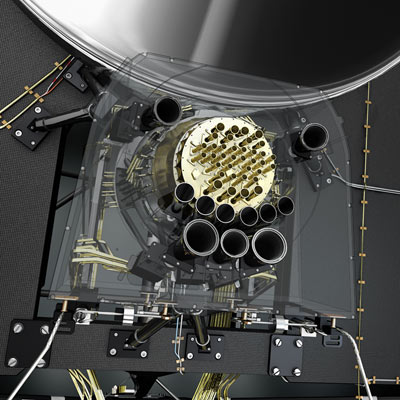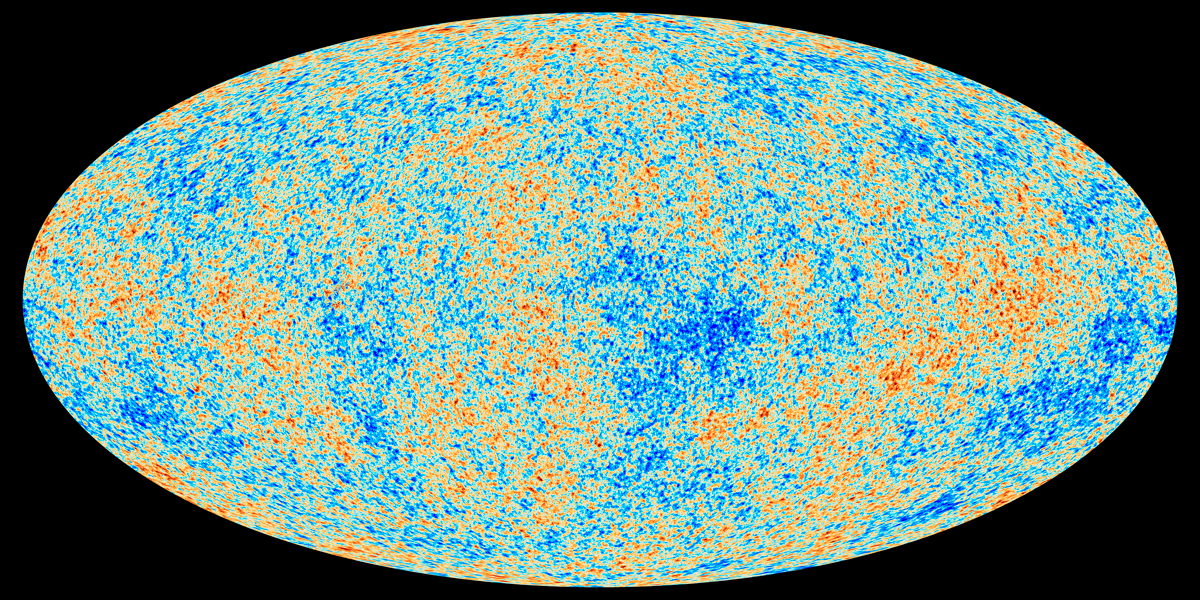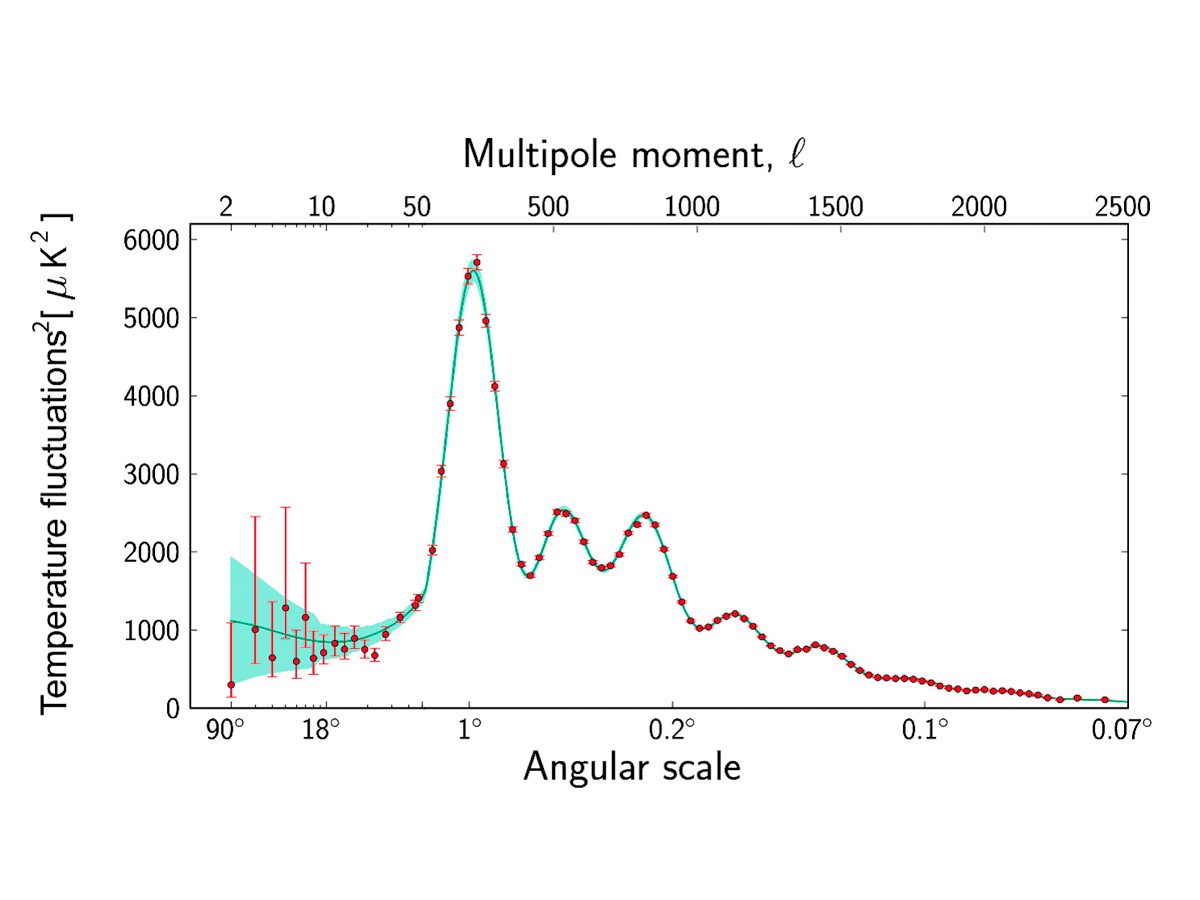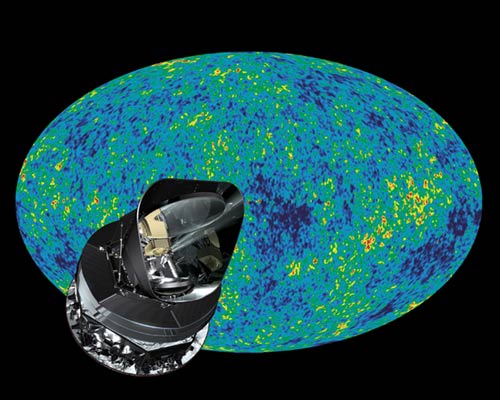Gallery: Universe's Cosmic Microwave Background Revealed by Planck Observatory
Planck's Space Detectors

This artist's view shows the combined focal plane of the two instruments on board ESA's Planck spacecraft. The High Frequency Instrument (HFI) is visible as a circular forest of horns at the centre, surrounded by the Low Frequency Instrument (LFI) ring of horns. [Full story.]
Best Map of the Universe to Date

This map shows the oldest light in our universe, as detected with the greatest precision yet by the Planck mission. The ancient light, called the cosmic microwave background, was imprinted on the sky when the universe was 370,000 years old. It shows tiny temperature fluctuations that correspond to regions of slightly different densities, representing the seeds of all future structure: the stars and galaxies of today. Image released March 21, 2013. [Full story.]
The Universe, Summed Up in a Squiggly Line

This graph shows the temperature differences in the oldest light in the universe, called the cosmic microwave background, detected by Planck at different distances apart on the sky. The curve is known as the power spectrum. The largest distances, or angular scales, starting at angles of 90 degrees, are shown on the left side of the graph, whereas smaller and smaller scales are shown toward the right. For comparison, the diameter of the full moon in our sky measures about half a degree. Image released March 21, 2013. [Full story.]
Planck 'Time Machine' to Study Big Bang

In this image, Planck is superimposed on a false-colour map of the CMB charted by NASA's WMAP satellite in 2003. Planck is improving enormously the sharpness and clarity of all the features in the map. [Full story.]
Get the Space.com Newsletter
Breaking space news, the latest updates on rocket launches, skywatching events and more!
Join our Space Forums to keep talking space on the latest missions, night sky and more! And if you have a news tip, correction or comment, let us know at: community@space.com.

Space.com is the premier source of space exploration, innovation and astronomy news, chronicling (and celebrating) humanity's ongoing expansion across the final frontier. Originally founded in 1999, Space.com is, and always has been, the passion of writers and editors who are space fans and also trained journalists. Our current news team consists of Editor-in-Chief Tariq Malik; Editor Hanneke Weitering, Senior Space Writer Mike Wall; Senior Writer Meghan Bartels; Senior Writer Chelsea Gohd, Senior Writer Tereza Pultarova and Staff Writer Alexander Cox, focusing on e-commerce. Senior Producer Steve Spaleta oversees our space videos, with Diana Whitcroft as our Social Media Editor.









